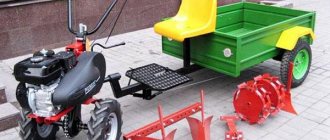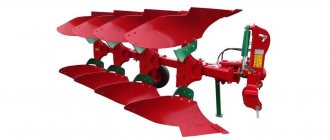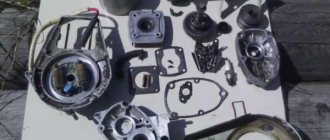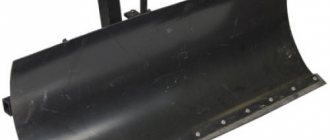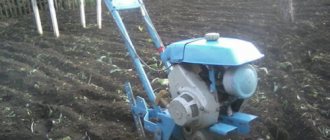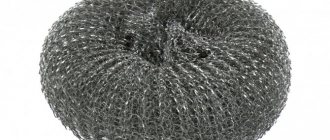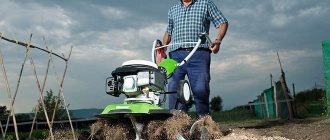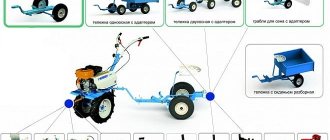Description
Mole cultivators are multifunctional equipment; with connected additional implements, they are capable of effectively performing agricultural work in a dacha or garden plot. In addition, cultivators can do some household and transportation work.
When combined with attachments, the Mole motor cultivator is capable of:
- cultivation and plowing of soil
- weeding between rows to remove weeds
- preparing beds and furrows for planting seedlings and sowing various crops
- hilling of plants
- pumping water and watering plantings
- mowing wild and cultivated grasses
- transportation of harvested crops and other cargo
- clearing the area of snow.
In order to expand the capabilities of the cultivator, depending on the type of attachment, the design of the cultivator provides various options for attaching attachments. Additional implements are not included in the package of the Mole motor-cultivator; they are purchased separately depending on the needs of the owner.
The procedure for connecting additional attachments
For rational installation of attachments, special accessories are used: suspensions, wheels, brackets. Before installing additional attachments, you must first remove the engine from the cultivator. To do this, remove the casing, unscrew the nuts and bolts of the fastenings, and remove the V-belt. Next, remove the throttle lever, then remove the engine and install the bracket and suspension.
Hitch
To connect various additional attachments, the cultivator uses two types of coupling mechanisms: adjustable and non-adjustable. Non-adjustable hitches fix the hitch without the possibility of adjusting the angle of movement, and are cheaper in cost. Adjustable devices provide the required angle of attack.
Trailer
The trolley is attached to the suspension by means of a kingpin, and instead of rotors, drive wheels are installed, after first removing or lifting the transport wheels. In this case, the vomer is removed.
Pumping unit
The pump is connected to the bracket; in this case, the drive is a belt. As when connecting a trailer, it is necessary to install wheels instead of cutters, and remove the transport wheels or fix them in the uppermost position.
Milling cutters
Soil cutters plow the soil without turning over the soil layer. The standard diameter is 33 cm, they are installed on the cultivator shaft.
For processing light and medium soils, one or two pairs of cutters are used; for processing virgin soil, 3 attachments can be installed on each side.
Some owners create their own tillers to increase the depth of tillage. There are unique homemade products with a diameter of almost 0.5 m. However, as experience shows, such improvements are not advisable both from the point of view of the technical capabilities of the Krot motor-cultivator, and based on the peculiarities of agricultural technology for cultivating the soil.
Before plowing, the transport wheels are raised and the coulter is mounted on a trailed bracket. Thus, the nozzles will ensure forward movement while cultivating the soil, and the coulter will regulate the level of immersion into the soil.
Depending on the quality of the soil, different types of cutters are used. For heavy, dense soil, the best option is the “crow’s feet” model; for less hard soils, conventional saber cutters are suitable. They can be made in different shapes - three-petal and four-petal.
Plowing a vegetable garden can also be done with a plow; to install it, the following manipulations are carried out: remove the cutters and install metal lugs in their place, remove the coulter. At the rear, the reversible plow is connected using a special coupling device.
Hiller
Similarly, to carry out hilling of crops, metal lugs are installed, and in the rear part of the Mole motor-cultivator there is a hiller.
Rotary mower
To mow grass on lawns or for making hay, the transport wheels are reinstalled on the gearbox shaft, and the mower and cultivator pulleys are connected by a belt drive.
All attachments are equipped with passports with technical documentation, so it will not be difficult for owners to carefully familiarize themselves with the features of connecting various types of additional attachments.
Kickstarter repair on a walk-behind tractor
The most common cause of hand kick failure is unbent spring mounting points. Sometimes there are times when you need to replace the starter cord. To find out the true cause of the kickstarter failure, you need to disassemble part of the walk-behind tractor.
Before you start repairing, you need to get a diagram of it, which you need to rely on when disassembling. So let's get started:
- Remove the kickstarter block.
- In front of you there will be a drum, in the center of which there is a washer; you need to unscrew it.
- Next, we remove other fasteners and carefully check all the parts.
What types of kickstarter failures can occur:
- reeds do not work;
- the cord is broken;
- the hook in the center of the reel is broken;
- one of the ends of the spring was bent.
If the cord is broken, it must be replaced with a new one. There are 2 hooks at the ends of the ring spring. If one of them does not have one, you need to heat the metal and bend it with a hook. It is also possible that the spring ring can be replaced completely.
How to make and properly equip reverse speed on a Mole walk-behind tractor?
- Let's take a pulley from the Volga, for example.
- Unscrew the nut and install the extended nut.
- An extended nut is used to tighten the primary pulley, which is standard.
- Then we screw the bolts into this nut, and thus the second pulley from the Volga is pressed.
- We use a pressure roller from a timing belt tensioner of some foreign car.
- We attach 2 springs and a cable.
This is basically the whole scheme of such a design. It is worth noting that even attachments like a plow will not interfere with the rear speed, and with any canopy the traction will be excellent, be it a plow or a rototiller.
Owner reviews
Denis:
“The Mole cultivator was inherited, so to speak. I myself worked on it almost from childhood. Now I also have a mini tractor on my farm, but Mole is Mole. On the farm I work with a tractor, but on the estate near the house it’s more convenient to use a cultivator. In the garden, in the beds, in the greenhouse - I do everything with different attachments. Over the years of operation, I changed the engine and bought a new Sadko. The opener also had to be replaced; it was cracked. I made some improvements to the bracket. In general, the assistant is reliable.”
Preparation of materials and equipment
Before you make a snowblower, you should do a lot of preparation. To do this, you need to prepare all the necessary equipment and materials. You will need:
- Set of wrenches of different sizes;
- Nuts and bolts;
- Drill;
- Bulgarian;
- Set of screwdrivers of different sizes;
- File and hammer;
- Vices and pliers;
- Electric hacksaw;
- Welding machine and chains of different diameters;
- Roofing iron sheet;
- Profile pipes of different diameters;
- Conveyor belt and plywood sheet;
- Metal corners;
- Several sealed bearings.
It is best to place all collected tools and materials on a flat surface, covering them with an old thick towel. This way you can quickly find the part you need and not be distracted by trips to the garage.
Using the Mole cultivator
Owners of vegetable gardens, small farms, and summer cottages who are planning to purchase a domestic motorized cultivator “Mole” (tested not only by time) are often interested in what attachments for this motor cultivator are sold on the domestic market.
Their interest is understandable and valid, because it is thanks to all kinds of trailed and mounted attachments that this unit becomes indispensable, one might say, a universal assistant on the site.
Using attachments on the “Mole” motor cultivator, you can perform the following agricultural work:
- Plowing the soil.
- Cutting soil for planting.
- Weeding plants from weeds.
- Hilling.
- Planting and harvesting potatoes.
- Using a pump to water a garden.
- Mowing the grass.
- Transportation of harvested crops and other cargo (bulk, piece, etc.) not exceeding a weight of 200 kg.
- Snow removal in winter.
About the disadvantages of a walk-behind tractor
The multifunctional walk-behind tractor Mole has its drawbacks:
Motoblock Mole at work
- The main disadvantage of the device is its low-power engine. With more volume there would be more opportunities.
- The open type design leads to severe contamination during operation. Dust clogs hard-to-reach places where there shouldn’t be dirt.
- Stones, roots, clods of earth get into the gap between the body and the knives, making work difficult.
- Only one operating speed.
- The service life of a 2-stroke engine does not exceed 400 hours.
- A narrow strip of land is processed in one pass.
- The piston group fails after 1-2 years and must be replaced.
- After replacing the engine with a more powerful model, the frame has to be strengthened with additional parts.
- High price of the unit.
Related video: Installing the Lifan LF 168 F2 engine on a KROT walk-behind tractor
Publications on the topic
Motoblock "Neva" and attachments
Using "Mole" for sewerage
How many cubes of solution fit in a concrete mixer, installation selection parameters
Attachments
Let's figure out which attachments for the “Mole” cultivator are used for these purposes. Plowing a garden can be done in two ways:
- using one or two (in rare cases three) sets of cutters;
- mounted reversible plow.
Milling cutter
In this case, cutters with a diameter of up to 33 cm are put on the gearbox shaft. In this case, the diameter of the cutter shaft of the Krot motor cultivator is 25 cm. For light soils, it is enough to attach one or two sets of cutters, for virgin soils - even three (on each side of the cultivator three pieces each, six in total).
Snow blower from a cultivator - features of the conversion
Snow blowers made from cultivators have gained popularity due to their ability to throw snow over fairly long distances. Often the distance over which snow masses are thrown reaches 10–12 m. Self-made equipment has a durable steel body. At the same time, the design contains a minimal amount of plastic, which makes the unit protected from almost any mechanical damage.
Like other snow blowers, the homemade unit is equipped with a rotating auger shaft. In the inner part of the structure there are reliable adapters and belts that provide strong pushes to throw snow far away. The unit is activated by connecting the shafts of the walk-behind tractor and a self-made snow blower using a belt drive.
Owner reviews
Dmitry, 46 years old
“Mole” is my breadwinner, since for the past six years I have been earning money by performing various agricultural works with this cultivator. Yes, the work is mostly seasonal, but I manage to earn money in the winter by clearing snow debris with a snow blower of my own making. My neighbors and acquaintances do not give me rest, I am constantly at work: plow for one, mow for another, relatives demand mechanized planting and digging of potatoes - progress, what can you take?! On my site I do all the work with a cultivator - I forgot about the back pain, I freed up time for part-time work, and now everything is in complete order, which is important. I acquired the equipment gradually, as my capabilities increased, some (milling cutters, snow blower, mower) I made myself from scrap materials.”
Oleg, 63 years old
“I’ve been working with a motorized cultivator for several years now. For 16 years, everything happened - minor breakdowns, problems with cutters, carburetor. But overall I can say that the unit is reliable and functional. I do almost all the work in my yard and garden with its help. I need to plow - plow, mow - mow, now I haven’t had any problems with planting and harvesting potatoes for a long time. I bought a full arsenal of equipment - all these hillers, diggers and planters... I bought a pump for watering the plants, there is a river nearby, why not use it. But I haven’t mastered the snow blower yet, I’m studying the drawings, selecting materials, so I’ll soon get one too.”
About the device and manufacturer
The main elements of the cultivator are a gearbox, levers, a fuel tank, a frame, a motor, a support, a wheel, and a blade of the working element. Torque transmission is ensured by a gearbox that is built into the engine.
The knives of the machine are designed to cut layers of soil, easily mix and chop them. Operating the device is effortless.
The Mole cultivator has gained popularity among gardeners and gardeners due to the fact that it carefully removes weeds and mixes various fertilizers with the soil.
Prominent representatives of the same reliable and high-quality equipment are the cultivators Tarpan, Patriot, Champion, Swift, Texas and Viking. For more information about the work of the Mole cultivator, watch the video:
All this contributes to intensive plant growth and large yields.
The Mole is a model of a Soviet and Russian cultivator, which began production back in 1983. Its production was established by the Moscow Machine-Building Enterprise named after. Chernysheva.
It is a leading company in the defense-industrial complex, employing the best specialists in the country. Now the production of the Mole cultivator has been established in the city of Omsk.
Today the complex includes several production facilities:
- foundry;
- galvanic;
- blacksmithing;
- mechanical assembly;
- welding
The quality control system used in the company has a Certificate of Conformity “NO “SOYUZSERT”.
The main features of the Mole motor-cultivator have always been increased engine life and operational reliability .
Modification of the rotors of the "Mole" motor cultivator
Motor cultivators "Mole"
, produced by the Moscow MPO named after. V.V. Chernyshova, have become widespread among gardeners, who usually buy them complete with rotors, which is enough for cultivating the soil on individual plots.
In Fig. 7a shows part of a motor cultivator with rotors on the left side. Using this part as an example, we will analyze some of the shortcomings of the “Mole”
, or rather, the shortcomings of its rotors. First of all, we note that the rotor knives are very blunt, and the pins that secure the inner rotor to the gearbox shaft and the outer rotor to the inner rotor protrude too much from the rotor shafts. As a result, roots and stems of plants are wound around the protruding parts of the pins, which, together with soil, clog the space between the internal rotor and the gearbox housing, as well as between both rotors. All this creates additional load on the gearbox shaft, and the rotors begin to rotate unevenly.
The spring clips that are inserted into the holes in the pins are also too long, which maximizes the possibility of roots and plants getting wrapped around them with the above consequences! Again, the bolts securing the knives to the square flanges of the corresponding rotors are longer than necessary.
P O P U L A R N O E:
A big Orthodox holiday is coming soon - Easter!
Let's talk today about how you can diversify your preparation for this holiday using various handicraft techniques.
What is most often remembered when Easter is mentioned? These are, of course, eggs.
In any home they are painted by the dozens for this great holiday. You will learn how to paint them in an original way, as well as what else you can do with them, in the article below.
We make the “White Swan” applique with the children.
We invite you and your child to make an original application using ordinary cotton wool. And we will portray a beautiful swan. Read more…
Do-it-yourself attachments for a walk-behind tractor
With the purchase of a walk-behind tractor, the user has a desire to use it in all household work for the garden, garden, etc. Some people strive to immediately purchase the maximum possible set of attachments for the walk-behind tractor, others buy only the minimum number, gradually purchasing the rest. The third category of owners undertakes the independent production of devices and additional devices with their own hands. Sometimes they surpass in many respects what the industry can offer.
What do walk-behind tractors come with?
The walk-behind tractor itself represents only a power unit with wheels. In order for it to perform useful work, it must be turned into an agricultural machine, supplemented with attachments. Only then do the positive aspects of this energy-rich device begin to appear.
A small list of basic attachments and attachments:
- The lugs will allow the walk-behind tractor to move across the arable land.
- Plow and cutter. Since ancient times, deep cultivation of the land with the rotation of the layer was carried out by plows. A soil mill is a device capable of loosening the fertile layer.
- A potato planter will make the work of villagers and summer residents easier when planting potatoes.
- A flat cutter is one of the ancient tools that is experiencing a rebirth with the emergence of the ideas of organic (ecological) farming.
- Hillers. An increase in the yield of root crops, as well as an increase in the efficiency of the plant root system, is achieved by using hillers.
- The trailer turns the walk-behind tractor into a vehicle that can transport cargo on the site and on public roads.
- The snow blower extends the period of use of the walk-behind tractor; in winter it is actively used for clearing snow.
This is not a complete list of attachments for a walk-behind tractor.
It is not necessary to purchase the entire set of attachments for the walk-behind tractor at once. Additional tools are purchased or manufactured as needed.
DIY lugs
The engine torque is transmitted through the transmission to the wheels. To move across arable land, you need to create sufficient force. You can increase traction by increasing the coefficient of adhesion of the wheel to the ground. Therefore, the lug increases this coefficient several times, making it possible not to increase the mass of the power unit.
To make this attachment, you need to purchase:
- sheet steel 2-3 mm thick, steel of ordinary quality st3 is sufficient;
- isosceles angle 35-50 mm;
- pipe with an internal diameter of more than 25 mm.
This set of blanks is sufficient to get started. All that remains is to choose a design or develop your own.
The lug can be leading and overhead. The driving lugs are installed in place of the base wheels of the walk-behind tractor. The overlays are put on top of the base wheel. Most often they make leading homemade lugs.
DIY plow and cutter
The plow, for all its apparent simplicity, is quite difficult to manufacture. Usually, production begins with a hitch - special attachments. The body is fixed to the hitch - this is the main working body. A walk-behind plow cuts the soil layer. Next, a layer is formed, and then its turnover occurs.
The design of the plow body includes several components:
- ploughshare – cuts into the soil;
- dump - serves to create a given movement of the formation and turnover;
- field board – stabilizes the direction of travel of the entire agricultural unit.
For a walk-behind tractor, the design of the rotary plow is interesting; with one move of the lock, the plow can easily be changed from right to left and vice versa. This is very convenient for cultivating land in small areas.
If the plow can be conditionally considered a passive working attachment, then the soil tiller is active. When cultivating the soil, the wheels are removed, and the unit moves due to the rotation of the cutters. The working blades perform a rotational movement and loosen the soil.
Which engine is suitable for the Mole walk-behind tractor?
The “weak link” of the Mole walk-behind tractor is the engine, which lacks performance and is difficult to start. The owners of the unit are trying to solve this problem on their own.
The design of the Mole frame allows you to replace the engine with a device from another manufacturer. The modifications required are minimal and uncomplicated, so they can be done independently. In most cases, the standard engine of a walk-behind tractor is replaced with 4-stroke models with better performance characteristics.
Engine Lifan 168FB
The optimal replacement solution is Lifan 168FB with a capacity of 6.5 liters. With. It is easy to find spare parts for this motor in a specialized store at an affordable price. When choosing, you need to check the diameter of the input shaft. It should be 20 mm. For reliable operation of the device, an oil bath with an air filter is preferable, because the engine will have to be operated in dusty conditions.
A good solution would be the Patriot engine. It won't cost much. The only condition is the presence of electrical wiring on the site.
Honda GC 135 engine - device
The Honda GC 135 engine is suitable for any operating conditions and consumes little fuel. The professional design of the 4-stroke motor features a single-block aluminum cylinder with a timing belt. It is lightweight and environmentally friendly.
Suitable for installation on Mole walk-behind tractor Sadko DE-220 engine. Its power is about 4.2 liters. s and the output shaft has a diameter of 19 mm, so the pulley will have to be modified. The device is started via a cord.
The Forza 160F 4-stroke engine with 4 hp has improved technical data. With. To operate, it will require AI-92 gasoline.
The motor for the Mole walk-behind tractor can be installed in other models, but only of low power. It is enough to limit yourself to 6 liters. With. A powerful motor unnecessarily loads the gearbox and leads to breakdowns.
